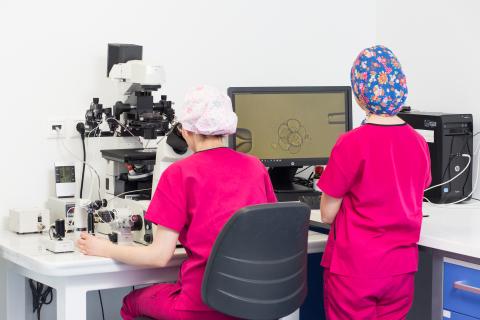Diagnosis of genetic diseases Part 1

Destined Preimplantation genetic diagnosis an opportunity to learn about the risks of hereditary diseases. Services and prices. the Cost of cytogenetic studies (karyotype) is about 7000. To learn more about. Learn about predisposition to hereditary diseases can help identify genes. Read more about the service. If in the family there were cases of diabetes, it makes sense to take advantage of identifying genes.
Read more about the service. Medicines can affect the results of the identification of the genes by polymerase chain reaction. Read more. Major commercial medical centres have a wide network of branches with a comfortable work schedule. Find your nearest medical center. "This is our family inheritance" we often say so in relation to other things. Under the concept of "hereditary" may fall hair color, and body type, and persistent colds. Most often we are justified by heredity, meaning the disease, which is not always true.
What are the genetic or inheritable diseases, how they are diagnosed and can they be prevented? What is genetic disease? A burdensome inheritance to begin to understand the terms. Let's start with the fact that genetic diseases and the diseases to which identified genetic predisposition different concepts. Genetic diseases caused by disturbances in the structure of the genome (hence another name monogenic diseases). When the disease is poorly enzymes that convert milk sugar into glucose. Already identified the gene responsible for the disease.
Moreover, it is found that if a child receives a "defective" gene from one parent, the enzyme system operating at about 50%, and if from both, then only 10%. The diseases for which a person has a genetic predisposition, depends not only on genetics but also from environmental factors: where we live, how we move, what they eat. For example, a person may be a tendency to atherosclerosis but a proper lifestyle and a balanced diet to help him stay healthy. To understand the principle of transmission of hereditary diseases, it is necessary to remember that such genes. Relatively speaking, this is a set of "memory cards", each of which recorded certain data about the human body.
Speaking scientific language, the gene is a fragment of our DNA. A set of genes (and their number comes to 25 0002), which is a tightly folded single strand of DNA is the chromosome. Only a human has 23 pairs. It is all of our genetic baggage, or otherwise genome. Each of 23 chromosomes has a pair. Recorded in the structure of one chromosome information is duplicated on steam. That is, any trait, be it eye color or predisposition to cardiovascular diseases, is encoded by two genes. They may be identical, but can differ (such genes are called alleles). For example, one of the two genes that determines eye color may encode a gray shade and the second brown.
Most likely, the carrier of these alleles eye color will be brown because the gene that carries this information, is dominant. The second gene (red eye color) are more "weak" recessive. Now let us examine the mechanism of inheritance. Being formed, the embryo receives half of chromosomes from mother and half from father. That is why the body of the child does not copy any of the parents and has its own personality.
.png)